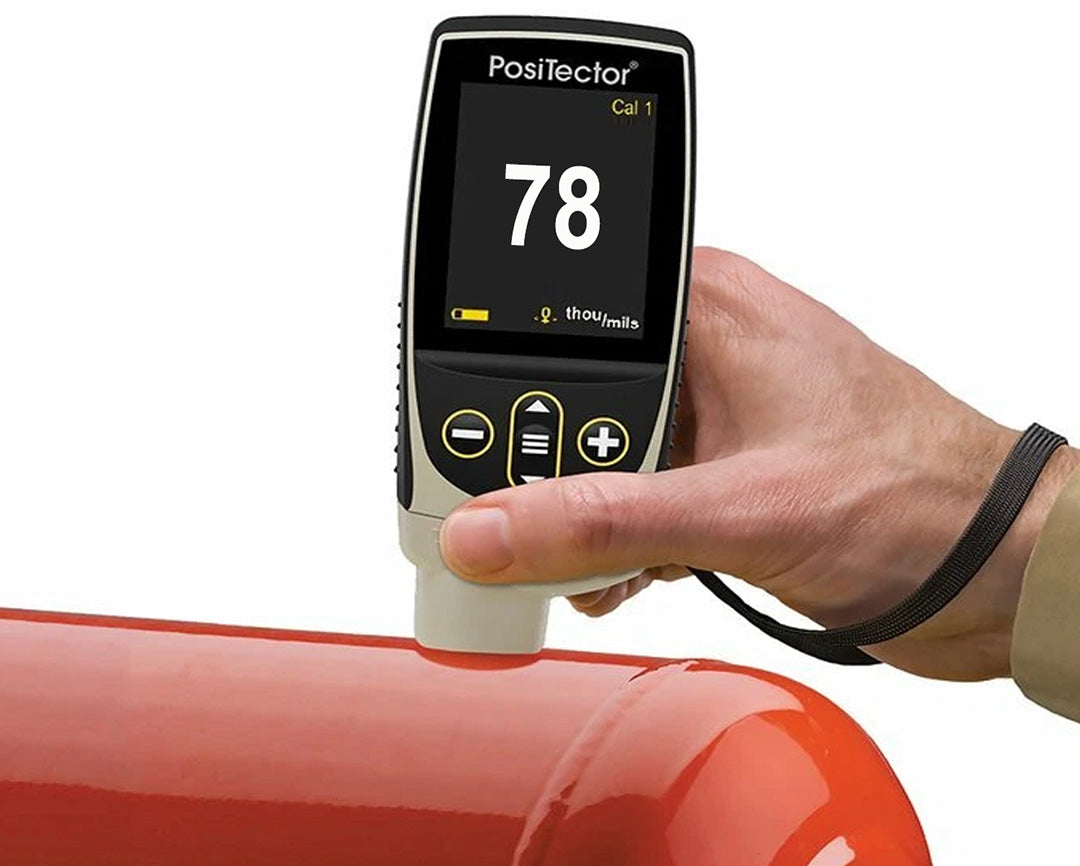
Application
Film Thickness
Dry Film Thickness (DFT) is measured in microns (millionths of a metre, 1 micron = 1/1000 millimetre) or in mils (thousandths of an inch, 1 mil = 1/1000 inch).
1 mil is approximately 25 microns. Manufacturers design coatings with a DFT in mind and being below or above the recommended range can have undesirable results.
DFT too low
Substrate shows through and/or the powder coating has a poor grainy flow. Dry Film Thickness (DFT) measurement shows that the coating is below the recommended film thickness.
-
Solution
Review settings and discuss with your spray gun supplier.
- Reduce powder delivery rate until the powder is sufficiently charged.
- Reduce forward air pressure
- Increase kV; also check the electrical continuity throughout the electrostatic system and clean or repair voltage-limiting components as necessary
- Replace worn parts
- Adjust and optimize spray gun positioning and air flow rates.
-
Solution
Check contact areas between parts and jigging hooks and ensure there is no build-up of cured powder coating, or any other insulating material. Jigs should not be too thin and the earth connection to ground should be secure and tested. Ideally resistance should be less than 0.5 megaohm, but should certainly be less than 1.0 megaohm.
-
Solution
Monitor and control the local humidity in the spray booth and air supply. Should the powder coating have excess humidity in the bag, this can be conveniently fixed by opening the bag and leaving it open to the atmosphere for a few hours. Protect the powder from possible contamination during this period.
-
Solution
Should the equipment be Tribo, check with us that the coating is suitable for Tribostatic application. Ensure the tribo tube is not coated with powder particles limiting the creation of friction. In certain circumstances is is possible to enhance the tribo-charging of the coating by addition of an additive to the fluidising container
The coating falls off
The powder coating, which should electrostatically adhere to the substrate, falls off. In more extreme cases, the powder coating does not apply to the edges of a part, or may not adhere at all.
-
Solution
Check contact areas to ensure there is no build-up of cured powder coating, grease or any other insulating material which would impede electrical earthing. In particular, check that jigs are thick enough for the job and that the contact of the jig with the part and the jig with the hanging rail is free from any coating build-up.
-
Solution
Control the humidity in the booth and the air supply. Store powder in a controlled (cool and dry) environment. Powder may be dried using a fluidised bed in a controlled (warm & dry) environment, although usually just leaving the bag open in a dry environment will acclimatise the powder. In exceptional circumstances, additives can be used – these are best applied in a fluidised bed.
-
Solution
Some powders have the ability to charge by friction (tribostatic) others do not. Contact us. Ensure tribo tube is not coated with powder particles limiting the creation of friction. In certain circumstances is is possible to enhance the tribo-charging of the coating by addition of an additive to the fluidising container
DFT too high
Coating surface is orange peeled and/or hazy. DFT measurement shows that the coating has been applied above the recommended film thickness.